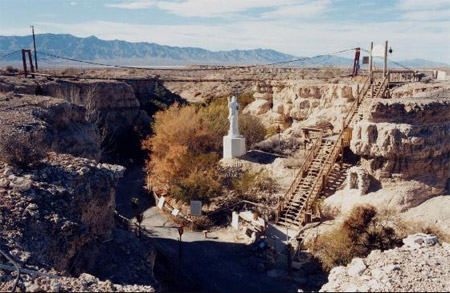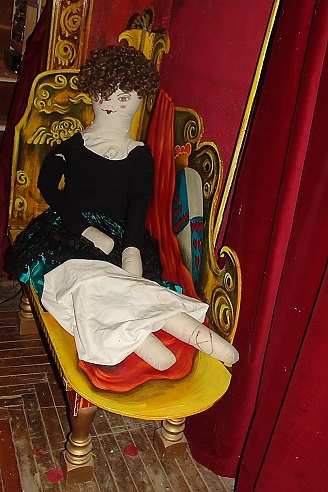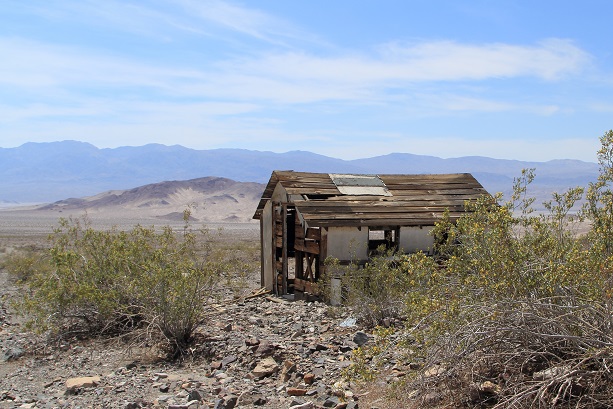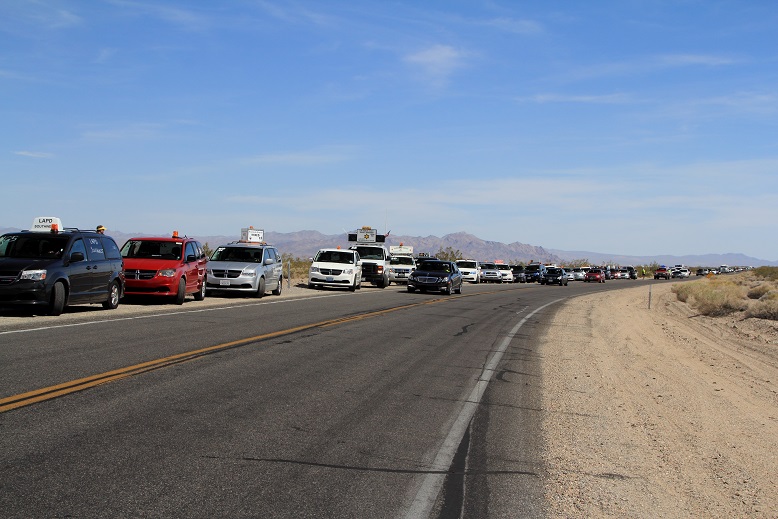Photographer and year of picture unknown
Roland
Wiley, moved to Las Vegas in 1929 and established a successful law practice,
later becoming the Clark County District Attorney. In 1936 he purchased the
Yount Ranch located southwest of Pahrump and started spending all of his free
time at the ranch. He eventually purchased an airplane so that he could make
the trip from Las Vegas to the Pahrump quicker, but sold the plane after a near accident
in the Spring Mountains.
Roland retired from his law practice in 1952; and while stricken with fever, he had a
vision about a beautiful desert canyon decorated with various art objects. He
was certain that the canyon in his vision was a small box canyon located on his
ranch, so he started a life-long career of transforming the canyon (later to be
called “Cathedral Canyon”) into a work of art. He built two trails into the
canyon – one up from the mouth of the canyon and the other from the east rim to
the canyon floor. Although the canyon was never completed to his dream, at one
time a pump-fed waterfall cascaded down the box end of the canyon, while
beautiful stained glass windows and art objects from around the world were set in alcoves along the canyon walls. Statues
(both religious and secular) and quotes from many famous people lined the walkways throughout the canyon. Benches
were placed along the walkways for visitors that wanted to sit and relax and contemplate the
canyon’s beauty. Roland also built a suspension bridge across the canyon so that
visitors could have a special aerial view of the beautiful decorations,
with the focal point being a replica of “Christ of the Andes.” No
admission was ever charged to visit the canyon.
The
canyon attracted thousands of visitors each year and became so popular that
most road maps contained an icon depicting the canyon’s location. A
registration book maintained at the site contained visitor comments from around
the world with many messages indicating that the serenity found at the canyon
was better than any other site they had ever visited.
Unfortunately,
Roland died in 1993 and Al Carpenter, an old friend of his, tried to keep the
canon intact; but without Roland and a full-time caretaker at the site, vandals
soon destroyed everything in the canyon. Today, Roland Wiley and Cathedral
Canyon are just a memory of a forgotten era when people enjoyed and respected
such works of art!
The below-listed pictures were taken in May 2013.
























































